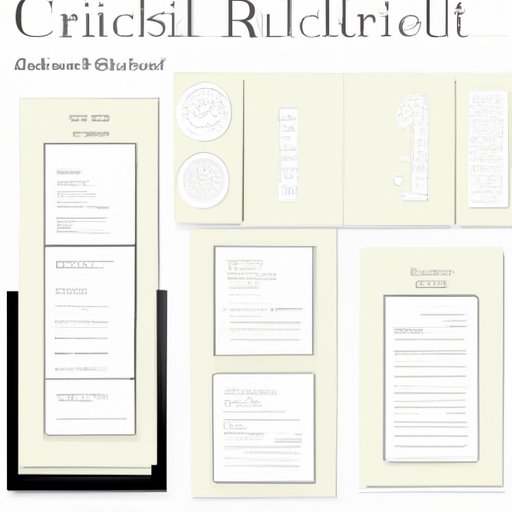
Introduction
Business cards are essential for any business as they serve as an instant reminder of what the business does and how to contact them. However, finding the right design and materials can be a challenge. Here’s where Cricut comes to the rescue! It’s an innovative cutting machine that offers unique design possibilities to make eye-catching business cards. In this article, we will cover everything you need to know to make your own DIY business cards using a Cricut machine.
Step-by-Step Guide for Making Business Cards with Cricut
The first step in making business cards with Cricut is to choose a design. You can either create your own design or use one of the many templates available in the Design Space software. Once you have a design in mind, it’s time to set up your Cricut machine. Ensure that the machine is calibrated correctly, and graphic design software is installed on your computer.
Next, choose the cardstock you want to use. Cricut recommends using their own brand of cardstock as it’s specifically designed to work with the machine, ensuring precise cuts. Load the cardstock onto the cutting mat, and use the Design Space software to send the design to the machine. Finally, once the machine has completed cutting the cards, remove them from the cutting mat and adjust as necessary.
Business Card Design Ideas for Cricut Users
Cricut offers a vast array of creative design possibilities to make unique business cards. You can add metallic foil accents, incorporate embossing, or even make personalized cuts into the cardstock to create unique shapes and sizes. You can also experiment with textures. Use textured cardstock or try adding different materials such as felt or fabric to create a unique look. With Cricut, the possibilities are endless.
Top Materials for DIY Business Cards with Cricut
The choice of the material depends on the design. The most commonly used material for making business cards is cardstock. However, there are lots of creative alternatives to consider, such as metallic paper, felt, or even wood veneer sheets. While choosing the material, consider how it will hold up over time and if it will feel and look professional.
Pros and Cons of Using Cricut for Business Cards
The Cricut machine offers many advantages for making business cards. You can create unique designs, achieve precise cuts, and save money in the long run. However, it also has some downsides. It can be a significant initial investment, and there’s a learning curve to get started that can take some time. Additionally, if you’re not careful, those extra materials and supplies can add up.
Designing Business Cards with Cricut for a Personal Touch
Cricut allows you to add personalized details to make your business cards unique. Consider using a custom font, your company’s logo, or even incorporating original artwork or photographs. Using unique shapes and colors that match your brand’s visual identity can add a personal touch and build recognition.
Saving Money with Cricut-made Business Cards
Using Cricut to make business cards can ultimately save money for a business. A Cricut machine is a one-time investment, and cardstock is generally an affordable material. It is more economical than ordering business cards from print shops, especially when making high-quality business cards with special details. Plus, any residual cardstock can be used for other projects in the future!
Conclusion
Making business cards with Cricut can save time, money, and frustration. It’s a simple way to customize your cards and add a personal touch. With Cricut, you can expand your design possibilities and create eye-catching business cards in a matter of minutes. Whether you’re just starting, or you’re a professional designer, Cricut is an affordable and accessible way to make unique business cards quickly.




